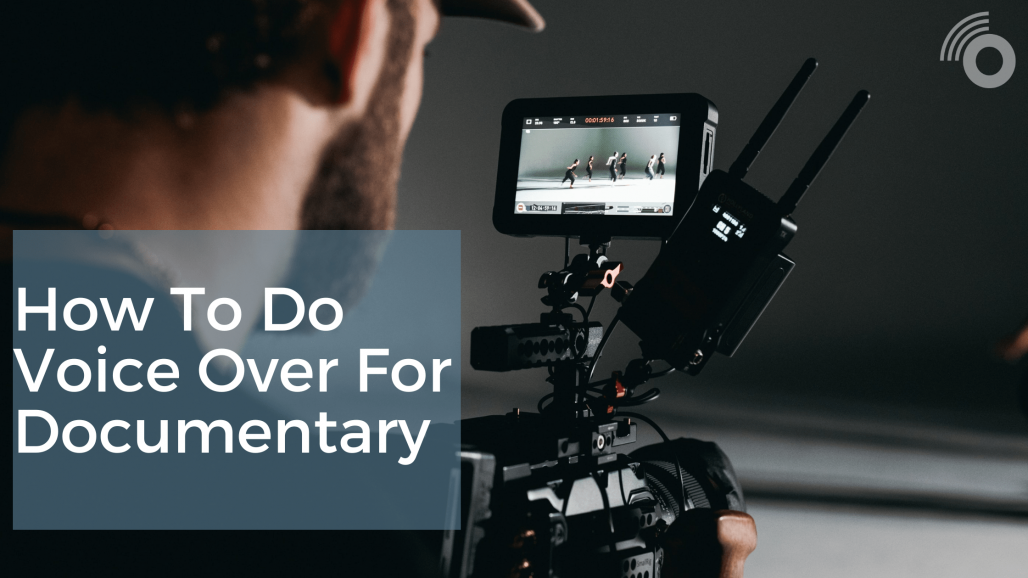Explore the art of documentary voiceovers, examining the different styles, essential qualities, and...
How to Do Voice Over For Documentary

Voice overs can be found in just about any form of multimedia, from video games and movies to audiobooks and commercials. However, one of the most sought-after voice acting position when it comes to voice overs is for documentary films.
There is something special about the way that these voice overs come across – they are read in a way that keeps documentary viewers engaged and entertained, whilst providing a sense of informative authority.
If you have ever wondered how you can record voice overs for documentary films, we’ve got you covered. We’ve put together the following guide that will demonstrate exactly how this can be achieved. Read on to find out more!
How to Do Voice Over for Documentary: Observe How it’s Done
Recording a voice over for a documentary may initially seem like an easy task but have a quick dry-run on some silent documentary footage and you will quickly realize that it is harder than you initially thought. You have to be knowledgeable about the subject matter of the documentary, provide informative commentary when appropriate, whilst also leaving space for the audience to take in what they are viewing.
The best way to get to grips with all of this is to simply observe the best documentary narrators at work, and who better to inspire you than David Attenborough. Sit down and watch one of his documentaries with the intention of taking notes, analyzing the flow of his speech, and identifying when information, comedy, or description is provided in relation to the images on the screen. It’s a fantastic way to put yourself in the shoes of a documentary narrator!
How to Do Voice Over for Documentary: Consider the Tone
Once you’ve watched a documentary with close attention to detail in regards to the voice acting, you’re now going to have to consider the tone of voice used. Once again, there is no better person to reference in terms of this than David Attenborough.
You probably noticed earlier when watching one of his documentaries that his voice will always sound natural, soft, and welcoming. Whilst this is generally a great tone to have, you should bear in mind that he is usually providing narration for nature documentaries, and this tone fits the genre perfectly.
However, if you have been hired to record a voice over for a comedy documentary or a sad documentary, you may need to consider using a different tone. Check out a few different styles and tones of those films and how the voice actors speak accordingly, it will help you refine your technique to master any type of documentary narration. The audience is the key. Think who will watch the film you’re narrating and use the tone of voice most suited to this type of viewer.
How to Do Voice Over for Documentary: Different Documentary Styles
So, you’ve mastered the script and you know exactly how you are going to read it – all that is left is for you to record the documentary narration. If your client is happy for you to record from your home studio make sure that you’ve got all the equipment and software necessary. Ensure that everything is working as it should be.
Once you’ve got all of that sorted, it’s time to consider what type of documentary you are recording for, and how to perform your voice over accordingly. There are many different types of documentary voiceover, but here are the most common:
- The second style of documentary voiceover is observational. For this, think David Attenborough - he is observing the documentary's subjects, commentating in a warm and gentle tone, whilst maintaining an informative and authoritative confidence.
- The first and most common documentary style is expository. With these documentaries, your voiceover will be expected to inform the viewer with authority and charisma. It is possible that you will be asked to persuade the audience with a specific point of view.
- The third documentary voice over style is participatory - as the name suggests, this is when the voice over interacts or participates with the actions of the subject. A prime example of this is Louis Theroux's style of interacting actively with subjects on camera.
- The fourth major style is the poetic documentary voiceover - this is perhaps the rarest form, as the narration is abstract, loose, and experimental. This style is usually reserved for artistic documentary approaches.
It’s highly recommended that you become familiar with the documentary’s style prior to any performance, practice as much as possible in advance. Don’t feel bad if you end up recording countless takes - it's all part of the process, even David Attenborough can’t record a documentary at one go!
Final Thoughts
We hope that you have enjoyed reading this guide and that it has helped you understand how to do voice over for documentary! It’s an admirable craft to learn and we applaud you for choosing to go down this path.
Finding documentary narration jobs can be difficult but check out freelance voice actor websites online and ask around in your local voice actor networks. New documentaries are being made every day and that is never going to change, so you simply have to find the clients and impress them. Why not work on some documentary narration in your spare time, overdubbing one of David Attenborough’s famous works? Listen back to your recording and make notes.
We wish you the best of luck!
Newsletter
Stay up to date with news and special offers. Get to know our new actors and features
NEED HELP?
Visit Frequently Asked Questions page or send us a question.











.png)







Comment